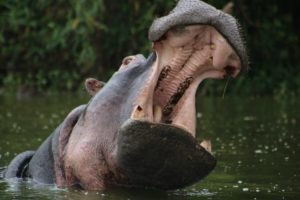I see a ring-necked parakeet or two has been spotted living in the wild up a tree somewhere in Kilmarnock.
That’s prompted speculation on the Rewilding Scotland Facebook page about the future of the birds in Scotland (along with the repetition of the widely debunked myth that Jimi Hendrix introduced them to London).

A couple of years ago I made a short film for the Nine on BBC Scotland about this very topic, dealing with what would happen to the flock of maybe 50 or so of the birds that had made their winter home in Victoria Park.
At the time Stan Whitaker of government wildlife agency NatureScot was compiling a report on whether they should be allowed to stay, or whether they should be got rid of. Stan suggested to me that it would be possible to remove them if necessary by netting them and then rehoming them to aviaries and bird keepers.
Bur one of the main obstacles to getting rid of them was that people had actually grown to like them because they’re a bit more exciting and interesting than our boring old wildlife, despite their rather alien noise and appearance, and despite evidence that suggests they can compete with some native species and even kill bats.
When I checked a few weeks ago Stan’s report was still in the works, thanks to Covid, and I’m not holding my breath for any outcome soon. Meanwhile of course the birds will be breeding and the numbers might even be so great that a different removal method will be required – shooting, or trapping and euthanasing spring to mind.
That of course will cause even more concern to the parakeet-lovers. But isn’t the precautionary principle – we have no idea what the long-term impacts of these birds will be, so get rid just in case – what should prevail with invasive species, scientifically speaking ?
I don’t suppose people worried too much about grey squirrels and rhododendron ponticum back in the day either, and although science is now better at looking at these things, and government agencies are asked to investigate, they have no crystal ball.
Which brings me to the hippos. You may have seen the story about hippos in Colombia, which were first taken there illegally by the drug cartel kingpin Pablo Escobar.
After he was killed in 1993 the hippos made a break for it, and there are now around 60 of them happily living the life of Riley in the basin of the Rio Magdalena, the main river of Colombia.
Just like our parakeets, people up there have grown to like them: they’re a bit more exciting than the normal Colombian fauna of spectacled caiman and a (different) species of parakeet and a few types of rare turtle.
They are now part of the tourist industry, and the government has a ban on shooting them, probably to deter bloodthirsty trophy hunters.
And, just like “our” parakeets, they are a potential hazard to the environment, with ecologists voicing concern.
Nataly Castelblanco-MartÃnez, an ecologist at the University of Quintana Roo in Mexico and lead author a study on the hippos, says it is one of the biggest invasive species challenges in the world.
Like Scotland’s parakeets, they don’t belong where they are now and confer no benefit. But Nataly says if she talks about culling hippos, “I am being called a murderer.”
Fortunately our parakeets don’t weigh a ton-and-a-half apiece, and they’re not yet on the tourist trail. I for one will be hoping they can get removed soon, from Glasgow, Kilmarnock and anywhere else in Scotland where they crop up. And I do hope Nataly and her pals can get rid of those hungry hippos …